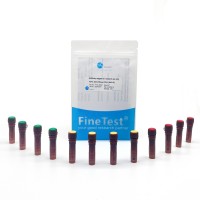Detection of RTK Pathway Activation in Drosophila Using Anti-dpERK Immunofluorescence Staining
互联网
1462
In Drosophila , like in other metazoans, receptor tyrosine kinase (RTK) signaling pathways control diverse cellular processes such as migration, growth, fate determination, and differentiation (Shilo, Development 132:4017–4027, 2005). Activation of RTKs by their extracellular ligands triggers a signal transduction cascade, mediated by the Ras/Raf/MEK cassette, which ultimately leads to dual phosphorylation and activation of the mitogen-activated protein kinase/extracellularly regulated kinase (MAPK/Erk). Once active, MAPK/Erk phosphorylates its cytoplasmic and nuclear substrates, consequently modulating (i.e., stimulating or inhibiting) their biological function (Murphy and Blenis, Trends in Biochemical Sciences 31:268–275, 2006). The currently available antibody specific for the doubly phosphorylated form of MAPK/Erk (dpERK) (Yung et al., FEBS Letters 408:292–296, 1997) provides a valuable readout for RTK signaling: it enables the spatiotemporal detection of RTK pathway activity in the developing organism, in situ (Gabay et al., Development 124:3535–3541, 1997; Gabay et al., Science 277:1103–1106, 1997). Here, we present a detailed protocol for anti-dpERK immunofluorescent staining that can be applied to the analysis of MAPK/Erk signaling in Drosophila embryogenesis.









